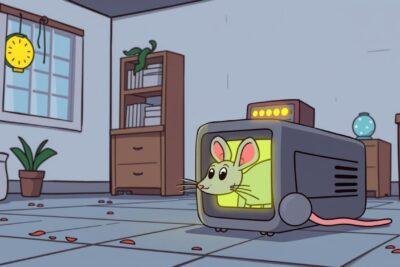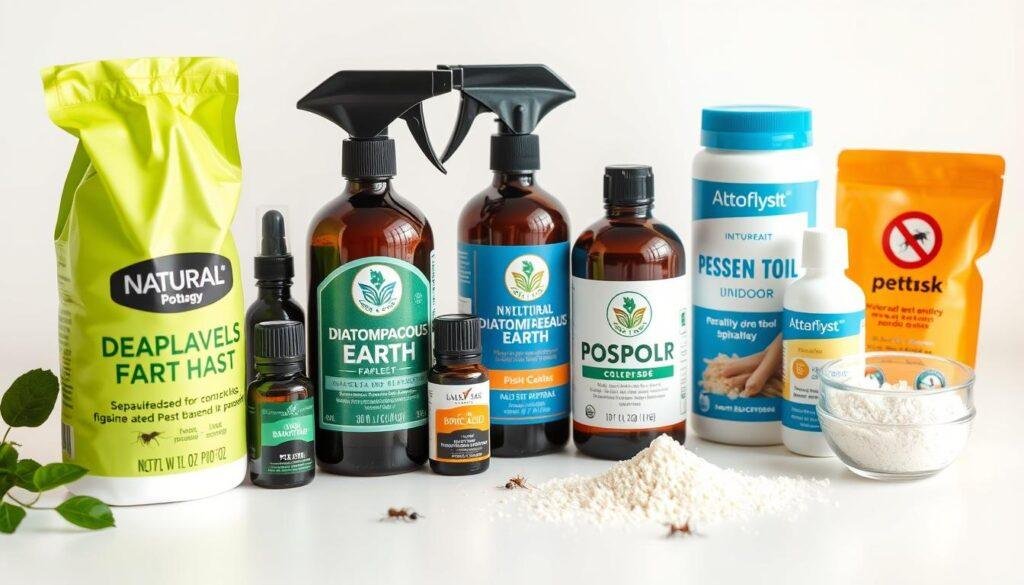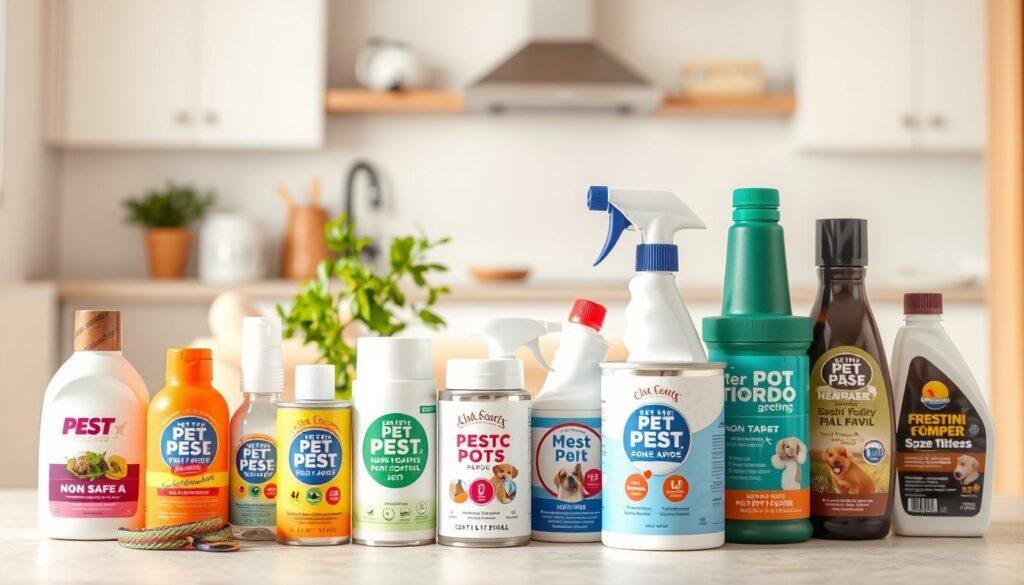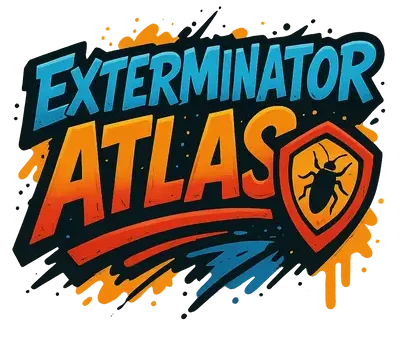
Effective Pet-Safe Pest Control for Homes in the USA

What if you could eliminate unwanted insects from your home without worrying about your dog or cat's safety? Many American homeowners face this exact dilemma every day.
Traditional pesticides often contain harmful chemicals that pose serious risks to our furry family members. With over 70% of American households owning pets, finding safe solutions has become more important than ever.
The good news is that effective protection doesn't require dangerous chemicals. Products like Spectracide Home Stop Bug Barrier, Wondercide Natural Flea Spray, and EcoSMART Organic Home offer proven results without compromising your pet's health.
ExterminatorAtlas.com provides comprehensive resources to help you navigate these safer alternatives. From natural pest control methods to professional services, you have multiple options that keep both your home and beloved animals protected.
This guide explores practical solutions that work for real families across America.
Why Pet-Safe Pest Control Matters for American Households
Understanding why pet-safe pest control matters has become crucial for responsible pet ownership in modern America. The traditional approach of using harsh chemicals to eliminate unwanted insects and rodents poses serious risks to our beloved companions. Pet owners must balance effective pest elimination with the safety of their furry family members.
The stakes are higher than many realize. Pets spend most of their time close to the ground where pesticide residues accumulate. They also groom themselves frequently, increasing their exposure to toxic substances through ingestion.
Common Household Pests That Endanger Pet Health
Several household pests pose direct threats to pet wellbeing beyond simple annoyance. Fleas and ticks top the list as disease carriers that can transmit serious illnesses to dogs and cats. These parasites spread Lyme disease, Rocky Mountain spotted fever, and other dangerous conditions.
Ants create problems when pets investigate their trails and nests. Fire ants deliver painful stings that cause swelling and allergic reactions. Some species contaminate pet food bowls, creating hygiene issues.
Roaches carry bacteria and allergens that trigger respiratory problems in sensitive pets. Mosquitoes transmit heartworm disease, a potentially fatal condition affecting dogs and cats. Wasps and bees cause painful stings that may result in severe allergic reactions requiring emergency veterinary care.

Dangers of Conventional Pesticides to Dogs and Cats
Research reveals alarming connections between conventional pesticides and pet health problems. A groundbreaking 2004 Purdue University study found that Scottish terriers exposed to herbicides were four to seven times more likely to develop bladder cancer. This finding shocked the veterinary community and pet owners alike.
"Lawn pesticides have been linked to cancer, nervous system disruption, and other serious problems in cats and dogs."
The persistence of these chemicals creates ongoing exposure risks. Pesticides remain active on grass surfaces for over 48 hours after application. Even more concerning, chemical residues appear in dogs' urine days after the initial exposure period ends.
Common symptoms of pesticide poisoning in pets include vomiting, diarrhea, difficulty breathing, and neurological problems. Cats face additional risks due to their unique metabolism, which struggles to process certain chemicals that dogs can handle more effectively.
Long-term exposure leads to cumulative health effects. Pets develop weakened immune systems, making them vulnerable to infections and diseases. Some chemicals disrupt hormone production, affecting reproduction and development in younger animals.
The Growing Demand for Non-Toxic Pest Solutions
American pet owners increasingly seek pet-safe insecticides and alternative pest control methods. This shift reflects growing awareness of health risks and environmental concerns. Market research shows that sales of natural pest control products have increased by over 30% in recent years.
Veterinarians now routinely recommend eco-friendly pest management approaches to their clients. Professional pest control companies report higher demand for green services from pet-owning customers. This trend extends beyond individual households to include pet-friendly businesses like doggy daycares and veterinary clinics.
Social media and online communities amplify awareness of pesticide dangers. Pet owners share experiences and recommendations for safer alternatives. This grassroots movement drives innovation in the pest control industry.
Regulatory agencies respond to consumer pressure by reviewing safety standards for household pesticides. The EPA continues evaluating existing products and approving new formulations designed specifically for homes with pets.
The economic benefits of choosing safer options become clear over time. Preventing pesticide-related health problems saves money on veterinary bills while protecting beloved family members. Pet owners discover that effective pest control doesn't require compromising their animals' safety and wellbeing.
Natural Pest Control Methods Safe for Pets
Many homeowners discover that nature provides powerful solutions for pest problems without putting their beloved pets at risk. These non-toxic pest solutions work effectively while maintaining a safe environment for dogs, cats, and other family animals. Organic pest treatments have gained popularity because they eliminate harmful insects without introducing dangerous chemicals into your living space.
The key to successful natural pest control lies in understanding how these methods work. Unlike conventional pesticides that rely on toxic chemicals, natural approaches use physical barriers, strong scents, and safe substances that pests naturally avoid.
"The most effective pest control strategy is one that protects both your home and your pets, creating a healthy environment where families can thrive without worry."
Essential Oil Repellents: Peppermint, Eucalyptus, and Citrus
Essential oils create powerful barriers against insects while filling your home with pleasant, natural fragrances. Peppermint oil works exceptionally well against ants, spiders, and mice because its strong menthol scent overwhelms their sensitive smell receptors. Mix 10-15 drops with water in a spray bottle for an effective non-toxic pest solution.
Eucalyptus oil repels flies, mosquitoes, and cockroaches with its distinctive camphor-like aroma. Apply diluted eucalyptus oil around entry points like windowsills and door frames. Citrus oils from lemon, orange, and grapefruit peels naturally deter ants and fleas while leaving a fresh scent.
Cat owners must exercise caution with essential oils. Some oils can be toxic to cats even in small amounts. Always research pet safety before using any essential oil, and ensure proper ventilation when applying these organic pest treatments.

Food-Grade Diatomaceous Earth for Crawling Insects
Diatomaceous earth offers one of the most effective organic pest treatments for crawling insects like ants, cockroaches, and fleas. This fine, powdery substance consists of fossilized diatoms that create microscopic sharp edges deadly to insects but harmless to pets and humans.
The powder works by cutting through insect exoskeletons, causing dehydration and death within 24-48 hours. Sprinkle food-grade diatomaceous earth in thin lines along baseboards, under appliances, and in areas where you've seen pest activity.
Always choose food-grade diatomaceous earth rather than pool-grade varieties. Pool-grade versions contain harmful chemicals that can hurt pets. Apply the powder when pets aren't present, and vacuum excess amounts after treatment to prevent respiratory irritation.
Homemade Vinegar and Dish Soap Sprays
Simple kitchen ingredients create powerful non-toxic pest solutions that eliminate various household pests. White vinegar disrupts ant trails and deters spiders with its strong acidic scent. Mix equal parts water and white vinegar in a spray bottle for an immediate pest deterrent.
Adding a few drops of mild dish soap increases effectiveness against soft-bodied insects like aphids and spider mites. The soap breaks down their protective waxy coating while the vinegar repels them from treated areas.
These organic pest treatments work best as preventive measures rather than elimination tools. Spray the solution around entry points, on ant trails, and in areas where pests frequently appear. Reapply every few days for continued effectiveness.
Physical Traps and Barrier Methods
Physical pest control methods eliminate insects and rodents without any chemicals whatsoever. Sticky traps capture crawling insects like cockroaches, ants, and spiders using non-toxic adhesive surfaces. Place these traps along walls and in corners where pests travel most frequently.
Copper mesh and steel wool create effective barriers against mice and rats. These materials can't be chewed through, making them perfect for sealing holes and cracks around your home's foundation.
Live traps offer humane solutions for larger pests like mice and squirrels. These non-toxic pest solutions allow you to relocate animals far from your home without causing harm. Bait traps with peanut butter or dried fruit for best results.
Door sweeps, window screens, and caulking represent long-term organic pest treatments that prevent infestations before they start. Regular maintenance of these physical barriers keeps pests outside where they belong.
Commercial Pet-Friendly Pest Control USA Products
Today's commercial pest control industry has revolutionized humane pest removal techniques for pet-owning households. These products undergo rigorous testing to ensure they eliminate pests effectively while keeping your furry family members safe. ExterminatorAtlas.com features comprehensive reviews and recommendations for commercial pet-safe pest control products available across America.
The best commercial solutions combine proven effectiveness with peace of mind. Pet owners can now access professional-grade products that match the safety standards they demand. These innovations represent a significant shift toward more responsible pest management.

EPA-Registered Pet-Safe Pesticides and Their Applications
EPA-registered pesticides undergo extensive safety testing before reaching store shelves. The Environmental Protection Agency evaluates each product's impact on pets, humans, and the environment. This rigorous approval process ensures that registered products meet strict safety standards.
Spectracide Home Stop Bug Barrier leads the market at $15.00 for 32 fl. oz. This EPA-approved formula creates a protective barrier around your home's perimeter. The product targets crawling insects while remaining safe for pets when applied according to label directions.
Raid Essentials represents another trusted EPA-registered option. These products use plant-based active ingredients that break down quickly after application. The formula eliminates pests on contact while reducing long-term exposure risks for pets.
Application timing matters significantly with EPA-registered products. Always apply these treatments when pets are away from the area. Allow proper drying time before letting animals return to treated spaces.
Plant-Based Commercial Insecticides: Neem and Pyrethrin Products
Wondercide Natural Flea, Tick & Mosquito Spray exemplifies effective plant-based pest control at $26.99 for 16 fl. oz. This product harnesses cedar oil and other natural compounds to eliminate pests safely. The formula works on contact while remaining gentle enough for direct application around pets.
Dr. Killigan's Six Feet Under Non-Toxic Insect Killer costs $24.97 for 24 fl. oz. This environmentally-conscious pest control solution uses soybean oil and other plant derivatives. The product kills insects through physical action rather than toxic chemicals.
EcoSMART Organic Home Pest Control offers budget-friendly protection at $12.42 for 24 fl. oz. Essential oils like peppermint and rosemary provide the active ingredients. These natural compounds disrupt insect nervous systems while posing minimal risk to mammals.
Natural Chemistry Natural Botanical Yard & Kennel Spray contains sodium lauryl sulfate (4.28%) as its primary active ingredient. Cinnamon oil (1.78%), cedar oil (0.71%), and clove oil (0.71%) provide additional pest-fighting power. This combination creates an effective barrier against various outdoor pests.
NatureShield Insect & Pest Repellent features garlic oil (0.75%) alongside cinnamon oil, castor oil (0.63%), and cedar oil (0.25%). These natural ingredients work synergistically to repel insects without harming pets or beneficial insects.
Pet-Safe Ant Baits and Roach Control Solutions
Ant and roach control presents unique challenges for pet owners. Traditional baits often contain ingredients that pose serious risks to curious pets. Modern pet-safe alternatives use enclosed bait stations that prevent pet access while maintaining effectiveness.
Orange Guard provides a citrus-based solution for immediate ant control. The product uses d-limonene extracted from orange peels to eliminate ants on contact. This natural ingredient breaks down quickly and poses minimal risk to pets.
Enclosed bait stations offer the safest approach for persistent ant problems. These tamper-resistant containers protect pets from accessing toxic baits. Place stations in areas where pets cannot reach or disturb them.
Roach control requires strategic placement of gel baits in cracks and crevices. Pet-safe formulations use food-grade ingredients that attract roaches while remaining less appealing to pets. Professional applicators often recommend these targeted approaches for households with animals.
ExterminatorAtlas.com provides detailed comparisons of bait station effectiveness and safety ratings. Their reviews help pet owners select products that balance pest elimination with animal safety. Regular product updates ensure access to the latest humane pest removal techniques and environmentally-conscious pest control innovations.
Professional Green Pest Control Services Across America
Many homeowners discover that professional pest control services using environmentally responsible methods provide the most effective long-term solutions for pet-owning families. These green pest control services combine advanced techniques with pet-safe products to eliminate infestations without putting your furry companions at risk.
Professional exterminators who specialize in eco-friendly methods understand the unique challenges pet owners face. They use EPA-registered products classified as 'minimum risk pesticides' that comply with strict safety standards. These products contain only permitted active ingredients found in commonly consumed food items and edible oils.
Finding Certified Eco-Friendly Exterminators
Choosing the right professional requires careful research to ensure they truly prioritize pet safety. Look for exterminators who hold certifications from recognized organizations like the National Pest Management Association or state-specific licensing boards that emphasize integrated pest management training.
Ask potential service providers specific questions about their pet-safe protocols. Qualified green pest control services should readily explain their treatment methods and provide detailed information about every product they plan to use in your home.
Red flags include companies that cannot specify which products they use or dismiss your pet safety concerns. Legitimate eco-friendly exterminators welcome questions about their methods and often provide written documentation of their pet-safe practices.
ExterminatorAtlas.com connects homeowners with certified eco-friendly pest control professionals who specialize in pet-safe treatments throughout the United States. This platform vets professionals to ensure they meet strict environmental and safety standards before listing their services.
Integrated Pest Management Programs for Pet Owners
Integrated Pest Management (IPM) represents the gold standard in environmentally responsible pest control. This comprehensive approach combines multiple strategies including biological controls, physical barriers, cultural practices, and carefully selected chemical treatments when necessary.
IPM programs begin with thorough inspections to identify pest entry points and breeding areas. Professionals then develop customized treatment plans that address root causes rather than just treating symptoms. This approach reduces the need for chemical interventions while providing more effective long-term results.
For pet owners, IPM programs offer particular advantages. They emphasize prevention and non-chemical solutions first, only using pet-safe pesticides as targeted treatments when other methods prove insufficient. This strategy minimizes your pets' exposure to any chemicals while maintaining effective pest control.
What Happens During a Pet-Safe Professional Treatment
Professional treatments begin with a comprehensive property inspection where technicians identify pest problems and assess potential risks to your pets. They examine areas where your pets spend time and note any special considerations for treatment planning.
Before applying any treatments, qualified professionals explain their planned approach and discuss pet safety protocols. They may recommend temporarily relocating pets from specific areas or scheduling treatments when pets can stay elsewhere for a few hours.
During treatment application, professionals use precise methods to minimize product exposure. They focus treatments on specific problem areas rather than broad surface applications. Green pest control services often use gel baits, targeted sprays, and physical exclusion methods that pose minimal risk to curious pets.
After treatment completion, technicians provide detailed instructions for pet safety. This includes information about when pets can safely return to treated areas and any precautions to take during the following days. They also schedule follow-up visits to monitor treatment effectiveness and make adjustments as needed.
Professional services maintain detailed records of all products used and their application locations. This documentation proves valuable for your veterinarian if any concerns arise and helps ensure consistent, safe treatments during future visits.
Long-Term Prevention Strategies for Pet-Owning Families
Effective pest prevention for pet owners involves developing year-round strategies that address root causes before problems emerge. Smart prevention saves money, protects your pets, and reduces the need for any pest control interventions. These eco-friendly pest management approaches work with nature rather than against it, creating a sustainable solution for American households.
ExterminatorAtlas.com provides ongoing support and seasonal reminders to help families maintain pest-free homes using proven preventive methods. The key lies in understanding that prevention is always easier than elimination, especially when you have beloved pets to consider.
Home Maintenance Practices That Deter Pests Naturally
Regular home maintenance creates an environment where pests simply cannot thrive. Sealing entry points around windows, doors, and foundation cracks eliminates 70% of potential pest access routes. Use caulk or weather stripping to close gaps larger than a quarter-inch.
Moisture control plays a crucial role in natural pest control methods. Fix leaky pipes, clean gutters regularly, and ensure proper ventilation in basements and crawl spaces. Pests need water to survive, so eliminating moisture sources forces them to look elsewhere.
Landscape management keeps pests away from your home's perimeter. Trim bushes and tree branches at least three feet from your house walls. This simple step prevents pests from using vegetation as highways into your home. Keep grass short and remove leaf piles where insects might hide.
Proper Pet Food Storage and Feeding Area Hygiene
Pet food attracts more household pests than almost any other factor. Store dry pet food in airtight metal or thick plastic containers with tight-fitting lids. Never leave pet food in original paper or thin plastic bags, as these provide easy access for ants, roaches, and rodents.
Establish consistent feeding schedules to minimize food exposure time. Remove uneaten wet food within 30 minutes and clean food bowls daily with hot, soapy water. A clean feeding area eliminates the scent trails that guide pests to your pet's meals.
Create designated feeding zones away from walls and corners where pests typically travel. Place food and water bowls on washable mats that you can clean regularly. This practice contains spills and makes cleaning easier while reducing pest attractants.
Seasonal Pest Prevention Tips for Pet Owners
Spring prevention focuses on blocking ant invasions and addressing moisture from winter thaw. Apply food-grade diatomaceous earth around entry points before the first warm days trigger ant activity. Check and repair any winter damage to screens, weatherstripping, and foundation sealing.
Summer strategies emphasize mosquito control and flying insect management. Remove standing water from pet bowls, plant saucers, and yard containers weekly. Install or repair window screens, and consider pet-safe fans to create air circulation that deters flying pests.
Fall preparation prevents rodents from seeking winter shelter in your home. October and November are critical months for rodent-proofing efforts. Store firewood away from the house, clean up fallen fruits and nuts, and inspect your home's exterior for new gaps or damage that occurred during summer.
Winter maintenance involves monitoring indoor humidity levels and checking stored items regularly. Keep pet areas well-ventilated to prevent moisture buildup that attracts silverfish and other humidity-loving pests.
Conclusion
Pet owners across America now have access to proven strategies that eliminate pests without putting furry family members at risk. From natural essential oil sprays to professional green services, pet-friendly pest control usa options provide effective solutions for every household situation.
The journey from harmful chemicals to safe alternatives represents more than just pest management. It creates healthier living spaces where pets can explore freely without exposure to toxic residues. Environmentally-conscious pest control methods protect not only your animals but also contribute to cleaner air and water in your community.
Stay alert for signs of pesticide poisoning in pets. Symptoms include excessive salivation, vomiting, diarrhea, lethargy, seizures, difficulty breathing, and muscle tremors. Contact the Pet Poison Helpline immediately at (855) 764-7661 if you suspect exposure.
ExterminatorAtlas.com serves as your trusted guide for ongoing pest control decisions. Whether you choose DIY natural remedies, commercial eco-friendly products, or professional green services, you can feel confident about protecting your home while keeping your pets safe.
Every choice you make toward safer pest control creates a better world for your pets and future generations. Your commitment to non-toxic solutions proves that effective pest management and pet safety work hand in hand.
FAQ
Are natural pest control methods really effective compared to conventional pesticides?
Which essential oils are safe to use around cats and dogs for pest control?
How can I tell if a commercial pest control product is truly pet-safe?
What should I do if I suspect my pet has been exposed to pesticides?
How do I find certified eco-friendly exterminators in my area?
Is diatomaceous earth safe for pets, and how should I apply it?
What's the most effective way to control ants without harming my pets?
How often should I apply natural pest control treatments?
Can I use pet-safe pest control methods for outdoor areas where my pets play?
What's Integrated Pest Management, and how does it protect my pets?
How should I store pet food to prevent attracting pests?
Are there seasonal considerations for pet-safe pest control?
Whether you’re tackling a single rogue ant or battling a full-scale termite invasion, our guide has you covered. Save Effective Pet-Safe Pest Control for Homes in the USA to your bookmarks and visit often—we refresh tips, treatment methods, and product reviews throughout 2025 so you can keep every pest problem under control the moment it appears.


Leave a Reply